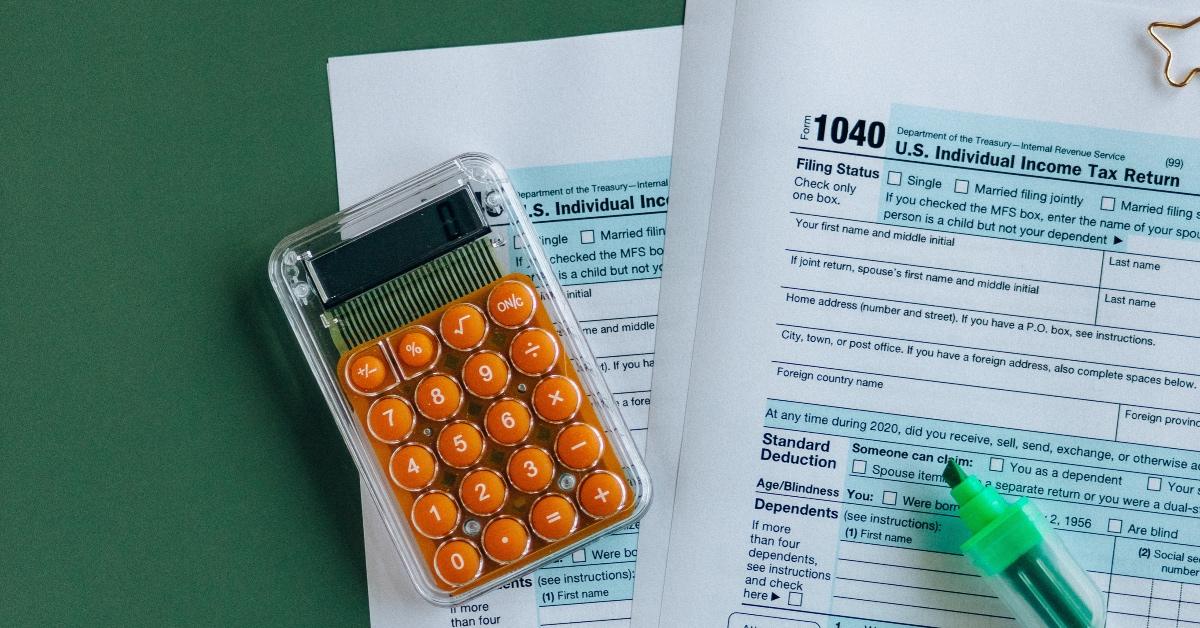Want to Know How Much You'll Get Back on Taxes? Here's How to Calculate
Many factors are used to determine how much you'll get back on taxes, including your income, filing status, and how many dependents you're claiming.
Jan. 20 2023, Updated 10:14 a.m. ET

Every year, millions of Americans receive a tax refund from the IRS. For the 2021 tax filing season, the IRS issued $1.1 trillion in tax refunds to taxpayers, which included $585.7 billion in EIC (Economic Impact Payments) and CTC (Child Tax Credits). If you want to determine how much you’ll get back on taxes this year, TurboTax and H&R Block both offer free refund calculators.
To find out what you’ll need to estimate what your tax refund will be and the available tax credits you might qualify for, read on.
How to calculate how much you’ll get back on taxes.

There are several tax refund calculators available on the internet, but it’s best to stick with a reputable source to get a more accurate figure. We looked over TurboTax’s free tax refund calculator to find out exactly what information you’ll need to estimate how much you’ll get back on taxes.
Before you begin using a free tax calculator, be sure to gather the following information:
- Your W-2s, 1099s, or any other tax forms you have that indicate how much you’ve earned this year.
- The amount you earned outside your place of employment. If you sold cryptocurrency or sold goods via PayPal or eBay, be sure to have the tax forms you received from these companies handy.
- The dependents you intend on claiming.
- How much you collected in unemployment, if applicable.
- A record of your childcare expenses for kids under 13.
- The amount you contributed to a retirement plan or IRA, or received in alimony or Social Security benefits.
- Any monetary donations you made for the tax filing year.
- The amount you paid in tuition or student loan interest, if applicable.
- The amount paid in mortgage interest or property taxes.
Also, you’ll need to know what filing status you plan on using, whether it's single, married, legally separated, married filing jointly, or married filing separately. If you’re married, you may want to file a joint return with your spouse for more tax incentives and, possibly, a larger refund.
Once you have all the information listed above, you can visit TurboTax’s website and input it into the tax refund calculator. Now, because you won’t be delving too much into your tax situation, the figure you’re given is only an estimate for how much you’ll get back on taxes. To determine the exact amount of your tax refund, you’ll need to file your taxes.
Here are a few tax credits and deductions that can make your tax refund larger.
Although tax refund calculators are a resourceful tool that can estimate how much you’ll get back on taxes, they don’t account for the various credits and deductions you can claim. If you want to be sure you’re getting the maximum refund, don’t forget to apply these credits to your return, given you qualify for them.
1. Child tax credits
For the 2022 tax filing year, eligible taxpayers can claim the CTC for children under the age of 18. This year, the IRS reduced the credit amount back to what it was in 2019 — $2,000 per dependent. The Child and Dependent Care Credit also returned to a maximum of $2,100 in 2022 instead of the $8,000 that was issued in 2021.
2. The home office deduction

If you're self-employed and work out of a home office, you may be able to deduct this on taxes. You'll need to know the exact size of the space you work out of in order to determine how large of a credit you can receive.
The Earned Income Tax Credit (EITC)
You may qualify for the EITC is your Adjusted Gross Income (AGI) doesn't exceed the IRS' income limits. If you don't have any children and file single, head of household, qualifying surviving spouse, or married filing separately and earned less than $16,480 is 2022, you may be entitled to receive an EITC credit of between $2 and $560.
In order to collect the EITC using the married filing separately status, you must be legally separated or lived apart from your spouse for the last six months of 2022.
If you decide to file your taxes using a tax preparation company, you should be guided through all the deductions and credits to ensure those you qualify for are applied to your return.
